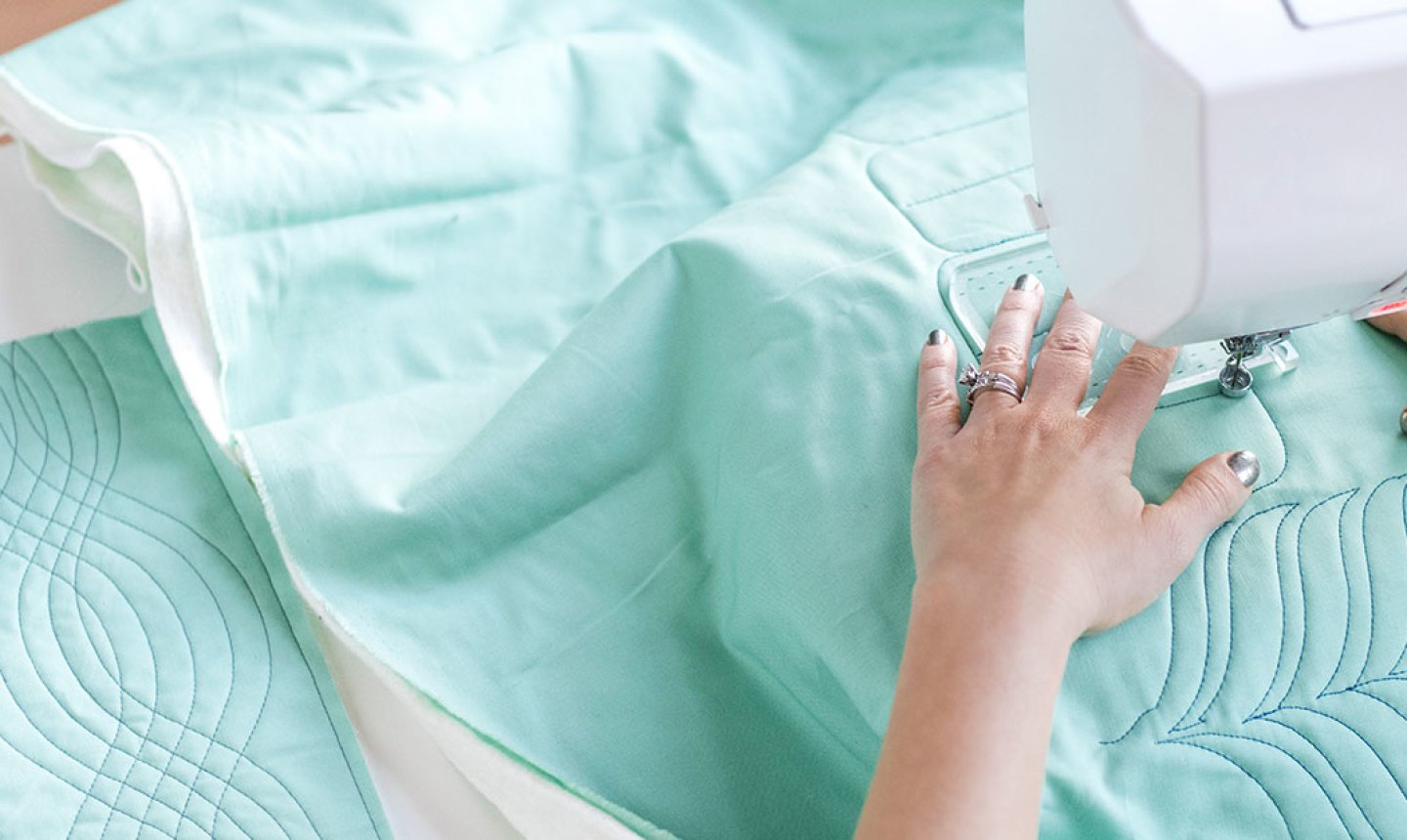
Longarm rulers are a quilter's BFF, but as you may have guessed from the name, they're traditionally used by those who sew on longarm machines. These acrylic rulers are usually thicker than rotary cutting rulers, and they're designed for ruler work — a technique where you guide the foot along the edge of the ruler to produce a perfectly straight line, curved angle or circular shape.
But there are huge advantages to using these rulers for free-motion quilting, too. For one, you're be able to stitch straight lines without marking, and you'll never once wobble out of the ditch. Plus, you can stitch tricky quilting designs (like ropes!) without breaking a sweat. Not to mention, quilting rulers are also covered in lines designed to help your stitching be more consistent — some even have echo lines, allowing you to measure as you stitch so your design is more evenly spaced.
In other words, quilting rulers are an effortless way to get a pristine look. Pair 'em with these tips and you'll have a fabulous new quilt design in no time.
New Online Quilting Class
Learn foolproof methods for conquering this common challenge.Enroll Now »
1. Get a Grip
You want the ruler to stick firmly to your fabric so you can focus more on guiding the quilt through the machine and less on keeping the ruler in place. Some quilting rulers have a grip built in, but for ones without a grip you can add one with tape. Three popular ruler tapes that help: Stable Tape, Handi Grip Adhesive Tape and Sew-Tacky Tape.
2. Choose the Right Ruler for You
It's easy to get overwhelmed when you start researching rulers because there are just so many options. For your first quilting ruler, opt for one you can use in more than one way, like one with curves and straight edges. You also want a ruler that's at least 1/4" thick. There are thinner rulers on the market, but these thicker ones won't slide under your free-motion quilting foot as you work.
3. Use a Ruler Free-Motion Quilting Foot
A ruler free-motion quilting foot looks similar to a regular free-motion quilting foot, but it has an attachment at the bottom. It's not necessary to use this attachment, but it prevents the ruler from sliding over as you stitch — and saves your needle from breaking!
4. Have a High Shank Machine
High shank or low shank refers to the height of your foot in reference to the bottom of your machine. When it comes to rulers, high shank allows you to work with the ruler at any angle. With low shank, you can only place your ruler in certain spots because there isn't enough room between your machine and your quilt.


<strong>Ticket #44847</strong> Can these be used on regular machines ?
What’s the best home quilting rulers to buy?
Been quilting for years but never learned how to use me
If you look at the class, Quilting With Rulers: Free Motion Made Simple with Angela Walters, she recommends specific rulers. You can see them in the PDF download too.
Who has the best quilting foot for ruler work low skank machine ?
What’s the best home quilting rulers to buy